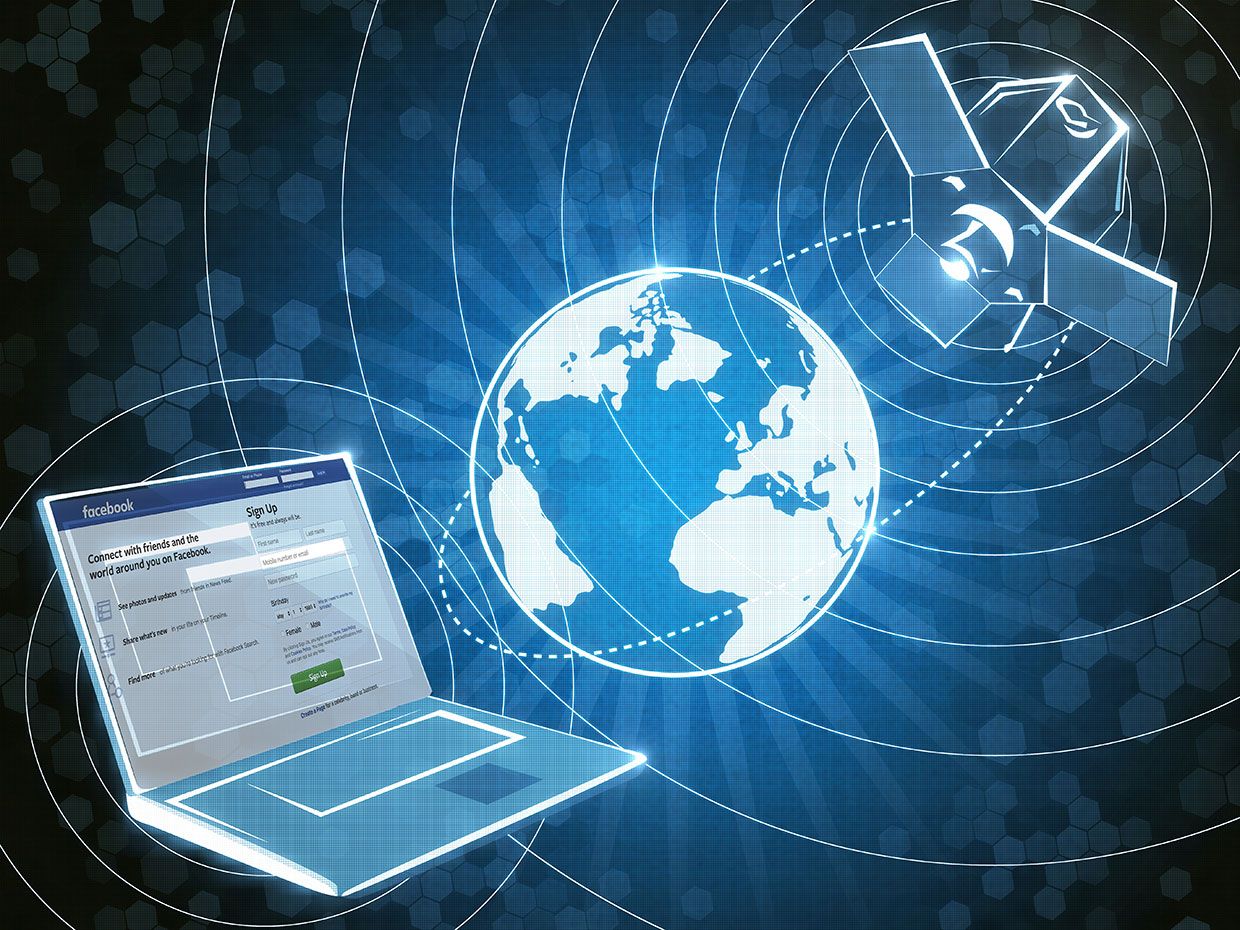
The Internet (or internet) is the global system of interconnected computer networks that uses the Internet protocol suite (TCP/IP) to communicate between networks and devices. It is a network of networks that consists of private, public, academic, business, and government networks of local to global scope, linked by a broad array of electronic, wireless, and optical networking technologies. The Internet carries a vast range of information resources and services, such as the inter-linked hypertext documents and applications of the World Wide Web (WWW), electronic mail, telephony, and file sharing.
The origins of the Internet date back to the development of packet switching and research commissioned by the United States Department of Defense in the 1960s to enable time-sharing of computers. The primary precursor network, the ARPANET, initially served as a backbone for interconnection of regional academic and military networks in the 1970s. The funding of the National Science Foundation Network as a new backbone in the 1980s, as well as private funding for other commercial extensions, led to worldwide participation in the development of new networking technologies, and the merger of many networks. The linking of commercial networks and enterprises by the early 1990s marked the beginning of the transition to the modern Internet, and generated a sustained exponential growth as generations of institutional, personal, and mobile computers were connected to the network. Although the Internet was widely used by academia in the 1980s, commercialization incorporated its services and technologies into virtually every aspect of modern life.
1904: The Veblenian Dichotomy distinguishes between institutions and their technologies.
1918: Taylorism, the original “management science,” is first documented by HB Drury.
1934: “Fordism” management style gains prominence for being efficient and oppressive.
1937: Ronald Coase publishes “Theory of the Firm,” the economic rationale for why firms grow which outlines a new branch of microeconomics. It will have an even greater impact once markets and firms are connected via cryptonetworks.
1956: Government antitrust suit against AT&T bars the firm from entering the computer business.
1956: Hacker movement emerges at MIT and Stanford.
1956: IBM releases the first computer hard disk drive, the 2,000-pound-plus, refrigerator-size IBM 305 RAMAC. The hard drive utilized magnetic disk storage enabling data retrieval without a delay.
1959: Jack Kilby develops the interconnected circuit into a chip form which will eventually be used in almost every electronic device.
1963: Ivan Sutherland, the Father of Computer Graphics develops the Sketchpad program which is the first program to use a graphical user interface, as opposed to a text-based one. He also developed one of the earliest forms of virtual reality.
1964: The National Society of Professional Engineers publishes a code of ethics. It’s still taught today.
1964: The poem “All Watched Over by Machines of Loving Grace” emblematic of Tech-utopianism. Here’s an excerpt:
“I like to think
(it has to be!)
of a cybernetic ecology
where we are free of our labors”
1968: The Mother of all Demos, engineer Douglas Engelbart illustrates Integrated Computer Systems — the use of lots of recent technologies in conjunction with each other — including on-screen windows, hypertext, graphics, file linking, revision control, video conferencing, the computer mouse, and word processing. It will enable computing to become personal rather than only a machine for specialists.
1969: The Union of Concerned Scientists is formed at MIT. This will change the direction of computing and scientific research away from developing military technologies toward solving pressing environmental and social problems.
1969: UNIX created by AT&T. UNIX is a family of multitasking, multiuser computer operating systems. All future operating systems will take form Unix.
1969: Automated Teller Machine.
1969: Formation of the Arpanet — four computers linked in 1969.
1970: Scientists at Corning produce a fiber optic of ultrapure glass that is capable of transmitting light well enough for telecommunications. This has helped bring faster voice, video, and data transmission.
1971: Prof. John Galbraith coins the term “the Technostructure” for business bureaucracy, which refers to a loosely organized collection of interests, decision-making bodies, and individuals with specialized knowledge and experience that direct the mechanical operations and technological development in modern society.
1974: DARPA develops Internet TCP/IP protocol suite.
1976: The Cray-1, the first commercially developed supercomputer, is installed in the Los Alamos National Laboratory.
1977: The Apple II, Commodore Pet and Radio Shack’s TRS-80 are introduced to the market. We know how this story ends.
1981: Writer William Gibson coins the term “cyberspace” to mean a digital dystopia where corporations rule.
1982: AT&T sued by the Department of Justice for antitrust violations and is broken up. If you love and use Verison, thank the government. If you hate Verison, thank the government.
1982: Fifteen-year-old Rich Skrenta creates an application called Elk Cloner as a prank — and ends up creating the first virus to spread outside its home network.
1983: Richard Stallman releases GNU/Linux, a free OS. Open source begins its dominance.
1983: Computer Professionals for Social Responsibility creates the Code of Ethics for cryptographers.
1983: David Chaum creates centralized digital cash system. Say hello to public key cryptography for money.
1984: IBM and AT&T begin using Internet protocol suite.
1985: Richard Stallman founds Free Software Foundation in protest of commercial software practices.
1985: General Motors experimented with employee company ownership of one of its car company, Saturn.
1988: Robert Morris creates the first internet virus, the Morris worm.
1989: Sir Tim Berners-Lee spawns the World Wide Web with the Hypertext Transfer Protocol, or HTTP.
1990: Electronic Frontier Foundation (EFF) is formed. It is now one of the leading nonprofit organizations for defending civil liberties in the digital world.
1994: The Today show infamously tries to explain the “@” sign.
1995: Richard Barbrook publishes “The Californian Ideology.” Read about how accurate he was 20 years later.
This timeline needs a curator. Could that be you? Ask us if this timeline is right for your curation via our contact us page.